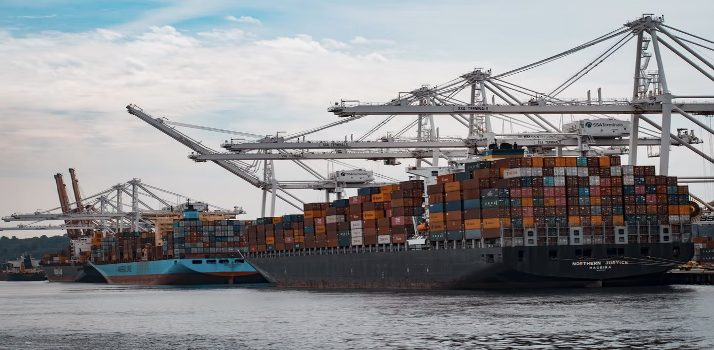Although most procedures and formalities are the same across all nations according to the General Agreement on Tariff and Trade (GATT), different countries may have regulations for importing textiles and textile products. However, through the Trade Facilitation Agreement (TFA), which is likely to be implemented within a few years, more trade liberalization is anticipated for WTO countries shortly.
Different countries have different procedures for the export and import of textiles. However, the salient steps are more or less the same.
Import Procedure
Importers always adhere to the following crucial steps in the importation process:
- Trade investigation
- Obtaining an import permit,
- Acquiring foreign currency,
- Putting the order or indent,
- Letter of credit (L/C) delivery,
- Obtaining the relevant paperwork for the import process,
- Completing the customs process and clearing the goods,
- Making a payment during the import process,
- Completing the transaction.
Apart from knowing the procedure, one should also know where they can get the best quality exported apparel. Indetexx Clothing happens to be one of the largest second hand clothes suppliers. They have a variety of used clothing categories, including unsorted credential apparel, used vintage clothing, mixed rags, and even sort and sell used clothing in bulk. They have created a thorough sorting procedure and a strong supply network to guarantee a steady supply of high-quality used clothing.
Export Procedure
Depending on the product or service being exported, one might require a license or permit as part of one’s company’s operations from the United States.
The steps for textile export are enlisted below.
- Preparing to export
- Making the deal
- Arranging the shipment
- Importing into the country
- Completing the transaction and getting paid
With the most diverse consumer base in the world and the largest economy, the United States presents a fantastic potential for overseas exporters. In addition, consumers in the United States are becoming increasingly interested in niche products like handicrafts and commodities manufactured using ecologically friendly methods. It’s a market that’s just begging to be discovered.
Shipment
Contrary to common opinion, the process of international shipping does not begin with the loading of a product aboard a ship. Instead, it starts much earlier when an importer identifies the need for that product and floats an enquiry to procure it. As such, the shipping process covers the flow of goods and documents from the place of origin to the area of destination. For the process to be completed successfully, the transfer of goods and records from one party to another must be highly synchronized.
On a different note, as there is a mention of ships, and if one owns a boat or a ship and is looking forward to changing its valves, one should always consider and check different types of valves in ships and choose the one that suits them the best!
Before shipment, the articles and goods are kept under high security to prevent theft, and expensive goods are sometimes even kept under surveillance. Besides that, even our homes require utmost safety. For that purpose, one can always rely on BE-TECH Smart Lock.
Important Points Regarding Import-Export
- If imported from specific countries following the importing country’s international trade policy, some of the commodities within the headings of silk, yarns, and woven fabrics are subject to anti-dumping duties. Before importing, importers of silk, wool, and woven fabrics may obtain accurate information from required governmental organizations.
- In practically all nations, the country of origin of imported textiles and textile products is required. Therefore, a certificate of origin issued by the requisite authorized authorities in the exporting country is needed to import fabrics and textile-related items. Determine the source of imported products to qualify for exemption from import duties and taxes with the aid of a certificate of origin. A variety of unilateral, multilateral, and bilateral agreements between nations permit imports and exports with the exclusion of import duties, with the Certificate of Origin serving as the primary indication of the country of origin of imported goods falling under the heading of textiles and textile articles.
- Before the actual dispatch of imports, the importer and supplier mutually agree on the terms and conditions of the import sale. Pricing, quality requirements, payment terms, delivery dates, method of transportation, and other terms and conditions are agreed upon and stated in the purchase order. The import shipment of textiles and textile-related products follows those terms.
Problems Faced By The Textile Industry
China, Turkey, and Brazil have productivity levels above 1 tonne per hectare, compared to India’s 0.3 tons per hectare. India is rated fifth in terms of capacity in the artificial fiber industry. However, in light of the shifting global fiber consumption, the sector’s ability and technological infusion must be substantially improved. It should be noted that the percentage of cotton in the total demand for fiber decreased from almost 50% (14.7 million tons) in 1982 to approximately 38% (20.12 million tons) in 2003.
The supply chain in this business is not only tremendously fragmented but is also plagued by bottlenecks, which may very well hinder this sector’s growth. The average lead time for delivery, from garment purchase to fabrication and shipment, is still 45 to 60 days. India needs to significantly reduce the manufacturing cycle time to remain competitive, given that worldwide lead delivery times have decreased to 30-35 days. In addition, inadequate port facilities, poor road connectivity, inconsistent power and water supply, and other export infrastructure deficiencies have all harmed the competitiveness of the Indian textile industry.
Conclusion
A country’s GDP, currency value, inflation rate, and interest rates can all be impacted by the government’s volume of imports and exports. The number of imports and the trade deficit can hurt a nation’s currency. Conversely, a robust domestic currency hinders exports and lowers import prices. Conversely, a weak domestic currency encourages exports while raising the cost of imports. By directly increasing the cost of inputs like labor and materials, an increase in inflation can also impact exports.



